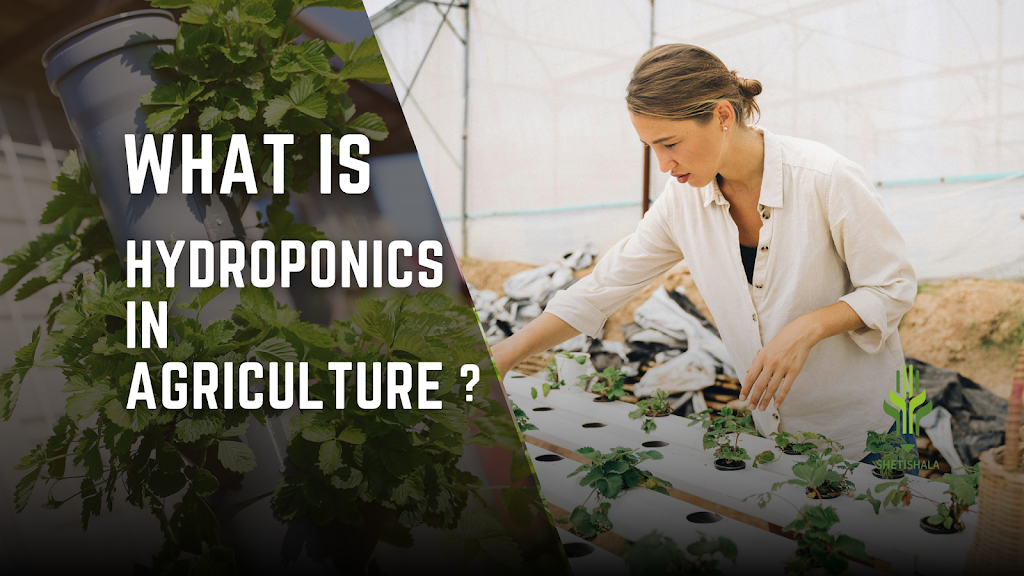
Introduction of Hydroponics:
Hydroponics is a method of growing plants without soil, using nutrient-rich water solutions to deliver essential minerals directly to the plant roots. This technique allows for precise control over the plant’s environment, optimizing conditions for growth and maximizing yields. Here’s a detailed overview:
Basic Components of Hydroponic Systems:
Growing Medium:
This systems replace traditional soil with inert growing media such as perlite, vermiculite, coconut coir, rockwool, or even just water.
The growing medium provides support to the plants and helps maintain an oxygen-rich environment around the roots.
Nutrient Solution:
Instead of extracting nutrients from soil, plants in This systems receive a carefully balanced nutrient solution made of water and essential mineral nutrients.
The nutrient solution is formulated to meet the specific needs of the plants at different growth stages.
Water and Nutrient Delivery System:
Hydroponic systems use different methods to deliver the nutrient solution to plant roots. Common systems include drip systems, nutrient film technique (NFT), deep water culture (DWC), and aeroponics.
Each system has its advantages and is chosen based on factors like plant type, space availability, and grower preferences.

Key Principles and Techniques:
Controlled Environment:
This system allows for precise control of environmental factors such as temperature, humidity, and light, optimizing conditions for plant growth.
pH and EC Control:
Maintaining the correct pH (acidity or alkalinity) and electrical conductivity (EC) of the nutrient solution is crucial for nutrient uptake by plants. Regular monitoring and adjustment are essential.
Oxygenation:
Proper oxygenation of the root zone is critical for healthy plant development. Oxygen is typically provided through aeration systems in the nutrient solution.
Plant Support and Training:
Since this systems often use substrates that don’t provide the same structural support as soil, additional support may be required for plants. Techniques such as staking and trellising help manage plant growth.

Advantages:
Increased Growth Rate:
Plants in this systems often grow faster than those in soil due to direct access to nutrients and optimized environmental conditions.
Water Efficiency:
This uses less water compared to traditional soil-based agriculture because the water is recirculated in the system, reducing wastage.
Space Efficiency:
This systems can be set up vertically or in compact spaces, maximizing land usage.
Reduced Pest and Disease Issues:
The absence of soil can reduce the risk of soil-borne pests and diseases.

Challenges and Considerations:
Initial Setup Cost:
This systems may have a higher upfront cost compared to traditional soil-based systems.
Technical Knowledge:
Successful hydroponic farming requires a good understanding of plant nutrition, system management, and environmental control.
Monitoring and Maintenance:
Regular monitoring of pH, EC, and other parameters is crucial for success. Systems require ongoing maintenance to prevent issues.
| Challenge/Consideration | Description | Impact | Mitigations/Solutions |
|---|---|---|---|
| Initial Setup Cost | Hydroponic systems often involve specialized equipment, growing media, nutrient solutions, and potentially controlled environment structures. These can be more expensive than traditional soil-based setups, particularly for larger-scale operations. | Higher upfront investment may deter some growers, especially those with limited capital. | * Careful planning and budgeting are crucial. * Start small and scale up gradually. * Explore DIY options or repurpose materials where possible. * Consider long-term cost savings in water, fertilizer, and pest control. |
| Technical Knowledge | Hydroponics involves understanding plant physiology, nutrient requirements, water quality, pH management, and potential system malfunctions. A lack of knowledge can lead to crop failure or inconsistent yields. | Steep learning curve can be challenging, especially for those new to agriculture. | * Invest in education: books, online courses, workshops, etc. * Seek guidance from experienced hydroponic growers or consultants. * Start with simple systems and gradually increase complexity. * Utilize technology for monitoring and automation. |
| Monitoring and Maintenance | Hydroponic systems require regular attention to maintain optimal conditions. pH, EC (electrical conductivity), nutrient levels, and water temperature need to be monitored and adjusted as needed. Systems also need cleaning and maintenance to prevent clogs, algae growth, and disease outbreaks. | Neglecting monitoring and maintenance can quickly lead to problems and crop loss. | * Develop a consistent monitoring and maintenance schedule. * Invest in reliable testing equipment and automation tools. * Maintain cleanliness and hygiene to prevent contamination. * Be prepared to troubleshoot issues promptly. |
This offers an innovative and efficient approach to agriculture, particularly in areas with limited arable land or challenging growing conditions. It’s a dynamic field with ongoing research and development to improve efficiency and sustainability in food production. As an agriculture graduate, diving into it can open up exciting opportunities for experimentation and innovation in crop cultivation.
check my others blogs



